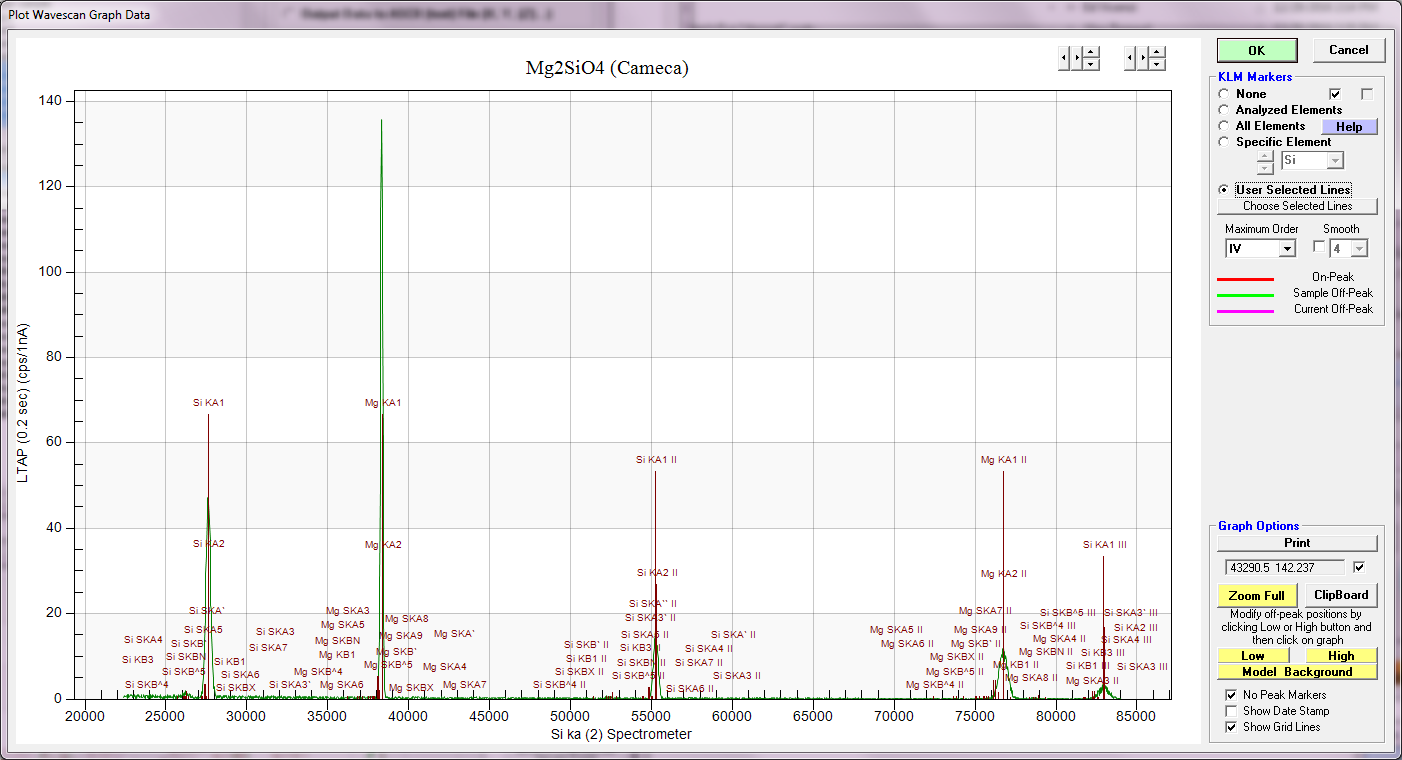Ok, I got the WDS Penepma simulation working well enough I think for general use, though it still needs some tweaking as you will see.
First of all I should remind you that you will need to update Probe for EPMA (from the Help | Update Probe for EPMA menu) to v. 11.7.6 and also a second update of the Penepma files (also from the Help | Update Probe for EPMA menu, but be sure to check the Update Penepma Monte Carlo Files Only checkbox).
Second, there is no matrix (de)correction in these simulations yet, nor have I added Ar and Xe absorption edges from the detectors.
Third, Probe for EPMA will automatically revert back to the old demo mode, if any elements in the simulation have not yet been calculated. I've done about 2/3 of the pure elements so far (at 15 keV), but am continuing simulations of the remaining elements and also at 10 keV and 20 keV.
Fourth, Probe for EPMA will also utilize the WDS simulation data for off-peak measurements (the WDS simulation intensity scans are normalized to the calculated peak intensity, so they still work for quantification), but that means you can now get off-peak interferences in this new simulation mode!

So, let's compare some simulated scans to actual scans on my Sx100 instrument (15 keV, 30 nA, 4 seconds per point, 2400 points). First let's look at a TAP crystal on Mg2SiO4. Here is the experimental scan:

Now here is a simulated scan on Mg2SiO4:

Not too bad! Especially since I only "simulated" the scan at 0.2 seconds per point!
Yes, the tail shapes are wrong because the convolution software (Penepma/Convolg) only does a Gaussian convolution at the present time, but still not too bad!
I'll post some more examples in a bit, but Barb wants me to help with the New Year's Eve party preparations! In the meantime I'll run the simulation at 4 seconds per point so the statistics are more comparable.
john